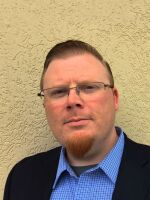by Tony Ganzer, ideastream
Today we revisit the occasional series on community policing in Cleveland, . Over the course of this series we’ve brought you many diverse perspectives on what community policing should look like, and how far some Clevelanders think we are from an ideal. While there are many perspectives, there are also common themes:
On a recent Saturday, at Cleveland’s Broadway Boys and Girls Club, Northeast Ohio police, fire, and Cleveland Clinic workers set up shop in a basketball gym. It was the latest in a string of ‘meet the safety forces’ events held at different spots in our region, maybe a gym this week, at a restaurant another. They’re meant for the public to meet not just police, but various rescue workers. Kids could learn about CPR, see a K-9 unit, or practice dialing 9-1-1…and grab a slice of pizza.
Rashonda Jackson is a Cleveland police dispatcher. She said she’s been coming to events like this for more than 10 years, with many in the summer. Today there weren’t that many community members who visited on a chilly March day. I asked Jackson why she thought that was:
JACKSON: “In today’s time, you know, people are a little reluctant. You know, and in these times people’s mentalities are different.”
GANZER: “You’ve done it 10 years, can you talk about how things have changed, especially in the last few years since there have been so many high-profile cases that are really--”
JACKSON: “Yes, I believe the trust has gone down between the community and safety forces. I believe people don’t trust anymore. Why? Because they take one incident, and they turn it into, and they categorize it in to one. There are police officers, and fire fighters, and every—they do great things all the time. And these are things the news don’t report. You know media has a lot to do with it. Because people are so into television, they take television as ‘the word’ and it’s not. You have to get out and find out for yourself how it really is. One incident doesn’t categorize the whole department.”
GANZER: “After so many years of coming to these things, do you think there are things people don’t know or they don’t hear about? I mean, I saw such a wonderful interaction, you had tons of kids here just practicing 9-1-1.”
JACKSON: “I think it starts with the children, because they don’t know as much as adults and they’re trying to learn, they want to learn, they’re inquisitive, they want to know what’s going on. And I feel as a parent, you should bring your children and educate them any way you can, because you never know, they may need safety forces at some point. We hope that they don’t. Because when people call for 9-1-1 they’re not happy, you know, they’re in distress. So the children need to know that, and I think they should bring their children out.”
That was Rashonda Jackson, a Cleveland police dispatcher.
Her 9-1-1 training was one of a number of stations set up at the event. Terrance Richardson works in community outreach for the Cleveland Clinic. She said this kind of event with agencies from many Northeast Ohio communities, is meant to show police officers are human…and everyone needs to work together for the betterment of the community.
RICHARDSON: “…and so far, so good, the community’s responding really well. We have pastors of churches who are calling us to say, ‘we’d like to partner with you’ and so the goal is just to bring as many community partners together and have events that promote a positive outcome.”
GANZER: “One thing you mentioned was there weren’t as many people as you would’ve liked here. What’s the hardest part in just getting folks to come in and know it is a non-threatening environment?”
RICHARDSON: “You know, that’s just the nature of the beast when you do community work. Sometimes you have a ton of people, and sometimes not so much. But we will continue to promote them, we continue to move to different communities, and to get people on board. Like I said, each one is different, so we just continue to do them and bring services to the community, and let people know the resources that are available to them, and that is how we will win them over.”
Events like these are meant to work toward improving community-police relations, which is also a big part of the consent decree with Cleveland and the Department of Justice on police reforms.
The focus for some in the community is not yet solely on repairing the relationship, rather still on mourning. Later that Saturday, after the police event at the Boys and Girls Club, dozens of people held a vigil on Cleveland’s East side for . Jones, an African-American, was shot by police a year ago, after breaking into a store.
The death is still under investigation.




